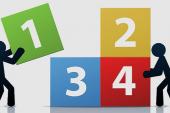GDMT With ARNI Linked to Less MR, May Obviate Need for Interventions
Before TEER or surgery, patients with MR should be optimized on GDMT with sacubitril/valsartan for at least 6 months, say experts.

The use of sacubitril/valsartan (Entresto; Novartis) in patients with heart failure with reduced ejection fraction (HFrEF) appears to reduce the severity of mitral regurgitation (MR), potentially making a mitral-valve intervention unnecessary in roughly half of patients who are treated, according to a new analysis of the PROVE-HF study.
These results, say investigators, though observational, emphasize the importance of optimizing guideline-directed medical therapy (GDMT) before treating mitral valve disease with either surgery or a percutaneous intervention, such as transcatheter edge-to-edge repair (TEER), and of doing so using medications that were not widely in use at the time of several recent mitral regurgitation trials.
“If you’re considering an invasive procedure to manage mitral regurgitation in your patients, even if they’re on optimal doses of an ACE inhibitor or an ARB, initiation of sacubitril/valsartan really should be considered first before deciding that a patient is medically optimized,” lead investigator James L. Januzzi Jr, MD (Massachusetts General Hospital, Boston), told TCTMD.
The investigator-initiated analysis, which was published October 2, 2022, in Circulation to coincide with a late-breaking presentation at the Heart Failure Society of America (HFSA) 2022 meeting in Washington, DC, provides insights into the type of improvements that physicians might expect in terms of MR severity when switching patients from usual care with ACE inhibitor or ARB to the angiotensin receptor-neprilysin inhibitor (ARNI), said Januzzi.
Gregg Fonarow, MD (University of California, Los Angeles), who wasn’t involved in PROVE-HF, said the new analysis is an important contribution as it looks at treatments that weren’t standard during COAPT, which showed the effectiveness of TEER with MitraClip (Abbott) in patients with functional MR. In that study, just 2.9% of patients randomized to medical therapy were treated with an ARNI; in MITRA-FR, which failed to show any advantage with TEER over GDMT, the percentage of ARNI use was slightly higher at 12.1%.
“[PROVE-HF] further highlights the importance of optimizing the most up-to-date and evidence-based guideline-directed medical therapy before proceeding with device therapy,” Fonarow told TCTMD.
For HFrEF patients being evaluated for additional therapy to treat moderate-to-severe MR, Fonarow said a multidisciplinary team that involves either a heart-failure specialist or a general cardiologist is important, because of the importance of GDMT, before making a decision about an invasive next step.
Half No Longer Eligible for TEER
The presence and severity of MR is a key determinant of both symptoms and prognosis in patients with HFrEF, Januzzi explained. While there are a number of mechanisms in which MR might occur, one prominent cause is ventricular remodeling resulting from reduced EF. Optimized GDMT has been shown to improve patient outcomes and promote reverse remodeling, which is accompanied by improvements in MR.
The main PROVE-HF study, published in 2019, showed that sacubitril/valsartan was associated with significant reverse remodeling, but investigators had not yet analyzed the association with MR severity.
PROVE-HF was a prospective, single-arm, open-label study of 794 patients with HFrEF treated at 78 US sites, the majority of whom (76.4%) were taking an ACE inhibitor or ARB before being switched to sacubitril/valsartan. Echocardiography was performed at baseline, 6 months, and 12 months and was interpreted in a temporally blinded manner, meaning the reader was blinded to the time point they were reviewing, in an effort to minimize bias.
The new analysis included 724 patients (mean age 65 years; 71.5% male), of whom 22.7% were Black and 14.9% were Hispanic. In terms of MR, 14.9% of patients had moderate-to-severe MR (3-4+), 21% had mild MR (2+), and 64.1% had none/trace MR (0-1+).
Without a course—a minimum 6-month course of sacubitril/valsartan—it would be premature to decide that someone should go directly to a valve procedure. James Januzzi Jr
Six months after treatment with sacubitril/valsartan, the percentage of patients with moderate-to-severe MR declined to 8.2%, which was a 44.7% relative reduction. This improvement was sustained to 12 months.
The researchers also assessed baseline and echocardiographic characteristics of those with moderate-to-severe MR who responded to treatment with sacubitril/valsartan, which was defined as a reduction in MR severity to less than 2+. By identifying nonresponders in advance, it’s possible they could be sent for a mitral valve intervention more quickly, said Januzzi. The reason for the analysis was to test the proportionate/disproportionate MR hypothesis that has been put forward following the conflicting results of COAPT and MITRA-FR, he said. According to the theory, fixing the mitral valve is more likely to yield successful outcomes in patients whose MR severity is disproportionate to the degree of left ventricular enlargement and remodeling.
“The bottom line is that there was no variable prior to treatment that predicted who would or who would not reduce their mitral regurgitation,” said Januzzi. “This suggests that without a course—a minimum 6-month course of sacubitril/valsartan—it would be premature to decide that someone should go directly to a valve procedure.”
In the HFSA session, G. Michael Felker, MD (Duke Clinical Research Institute, Durham, NC), presented the PROVE-HF results and made a similar point.
“Even when we looked at measures designed to gauge the relative severity of ventricular dysfunction versus a valvular issue, which we know can impact who might or might not improve with a mitral intervention, we saw that these were similar between responders and nonresponders,” he said.
Fonarow noted that while optimizing patients on current GDMT with sacubitril/valsartan reduced the percentage who’d be eligible for a mitral-valve intervention, roughly half continued to have moderate-to-severe MR. “That’s the other aspect,” he said. “It’s not as if you just optimize medical therapy and then every patient is going to have an elimination of their mitral regurgitation.”
He added that if patients were treated with a sodium-glucose cotransporter2 (SGLT2) inhibitor as part of GDMT, a drug class also not standard at the time of the randomized TEER trials that is now considered part of the four pillars of HF therapy (alongside an ARNI, beta-blocker, and mineralocorticoid receptor antagonist), the proportion who saw an improvement in MR may have increased even more.
But Fonarow acknowledged that there is still a much room for growth in the use of guideline-directed therapies for heart failure in the US. Data from the CHAMP-HF registry, which was published in 2018, showed that few patients were receiving target doses of an ACE inhibitor/ARB, ARNI, or beta-blocker, although most were receiving target doses of a mineralocorticoid receptor antagonist. Things have improved since then, with greater uptake in sacubitril/valsartan and SGLT2 inhibitors, but there are still gaps in care, said Fonarow.
Moving TEER Into the Real World
Much was made at the time COAPT was released of how rigorously patients had been optimized on GDMT prior to randomization in the trial, with some observers predicting that this may be less likely to occur in the real world, a point echoed by Felker.
The PROVE-HF trial, he said, reinforces the effectiveness of GDMT in improving ventricular remodeling and diminishing the severity of MR, even in patients who have been diagnosed with heart failure and treated with medication for an extensive amount of time. In PROVE-HF, for example, patients had been treated with medical therapy for a median of 50 months
“You think the horse is out the barn, the ventricle is what it is, but half the patients improved their MR significantly [after treatment with sacubitril/valsartan],” said Felker.
To TCTMD, Januzzi said that TEER with MitraClip, when done in patients who have been appropriately treated with GDMT, is an excellent procedure that reduces symptoms, slashes hospitalizations, and helps patients live longer as shown in the COAPT trial. For that reason, it is part of the armamentarium of physicians who care for HFrEF patients with moderate-to-severe MR. Analyses like those from PROVE-HF, however, emphasize the importance of giving medication a fair shake before going that route.
“There’s no doubt we do a lot of MitraClip procedures,” he said. “The question is whether we’re optimizing medical therapy sufficiently in those patients. Those data aren’t available, but one could argue that these results show a path forward in terms of optimizing medical therapy before clipping them.”
Michael O’Riordan is the Managing Editor for TCTMD. He completed his undergraduate degrees at Queen’s University in Kingston, ON, and…
Read Full BioSources
Januzzi JJ, Omar AMS, Liu Y, et al. Association between sacubitril/valsartan and mitral regurgitation severity in heart failure with reduced ejection fraction: the PROVE-HF study. Circulation 2022;Epub ahead of print.
Disclosures
- Januzzi reports serving as a board member of Imbria Pharmaceuticals and research support from Abbott, Applied Therapeutics, Innolife, Novartis Pharmaceuticals, and Roche Diagnostics. He reports consulting income from Abbott, Beckman, Bristol Myers, Boehringer-Ingelheim, Janssen, Novartis, Pfizer, Merck, Roche Diagnostics and Siemens and participates in clinical endpoint committees/data safety monitoring boards for Abbott, AbbVie, Bayer, CVRx, Intercept, Janssen, and Takeda.
- Fonarow reports consulting Amgen, AstraZeneca, Bayer, Janssen, Merck, and Novartis.
- Felker reports research grants from the NHLBI, American Heart Association, Amgen, Bayer, BMS, Merck, Cytokinetics, and CSL-Behring. He reports consulting for Novartis, Amgen, BMS, Cytokinetics, Medtronic, Cardionomic, Boehringer-Ingelheim, American Regent, Abbott, AstraZeneca, Reprieve, Myovant, Sequana, Windtree Therapeutics, and Whiteswell. He reports serving on clinical endpoint committees/data safety monitoring boards for Amgen, Merck, Medtronic, EBR Systems, V-Wave, LivaNova, Siemens, and Rocket Pharma.





Francesco Maisano